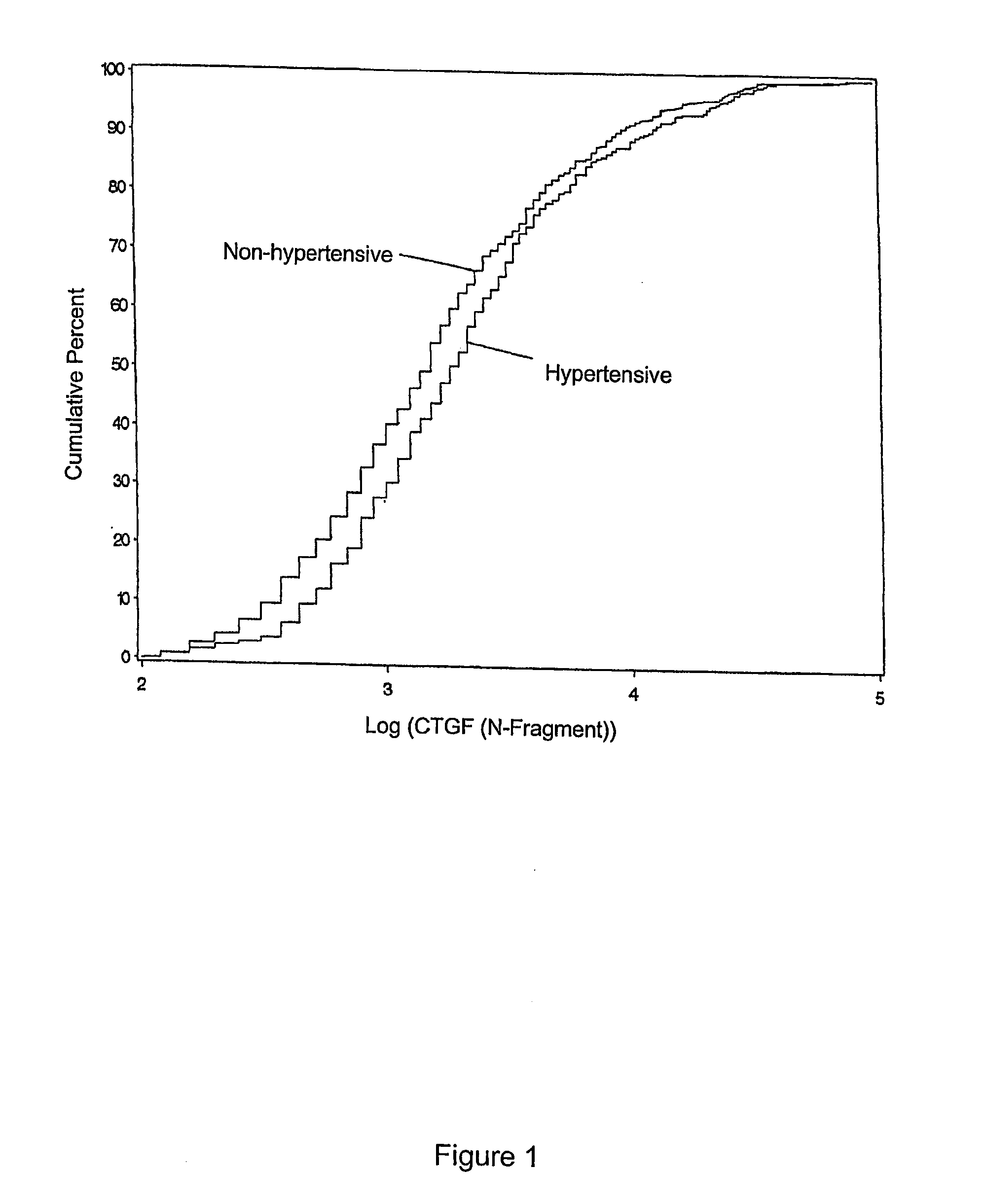Diagnostic marker for diabetic vascular complications
a technology of vascular complications and diagnostic markers, which is applied in the direction of instruments, biological material analysis, measurement devices, etc., can solve the problems of cardiovascular complications derived mainly from cardiovascular complications, diabetes mellitus is associated,
- Summary
- Abstract
- Description
- Claims
- Application Information
AI Technical Summary
Benefits of technology
Problems solved by technology
Method used
Image
Examples
example 1
Methods of the Present Study
[0035]The following methods were used in the current studies:
Study Population
[0036]The study population was the North American DCCT / EDIC cohort, comprised of 1,325 type 1 diabetic patients from the original 1,441 DCCT subjects. The original DCCT (Diabetes Control and Complications Trial) cohort consisted of men and women between the ages of 1340 years with 1-15 years of diabetes at study entry (The Diabetes Control and Complications Trial Research Group (1993) N Engl J Med 329:977-986), enrolled between 1983 and 1989. Half of the patient population was randomly assigned to conventional diabetes treatment and the other half was assigned to intensive diabetes treatment. In 1993, the DCCT study was stopped after an average follow-up time of 6.5 years, when intensive treatment was clearly shown to reduce the risks of retinopathy, nephropathy, and neuropathy (The Diabetes Control and Complications Trial Research Group (1993) N Engl J Med 329:977-986). The pati...
example 2
CTGF N-Fragment Levels in DCCT / EDIC-cohort of Type 1 Diabetic Patients
[0042]The clinical characteristics of the study population on which the CTGF measurements were performed are shown in Table 1 (clinical characteristics of the DCCT / EDIC-cohort by gender*). The circulating levels of plasma and the urinary excretion rate of CTGF N-fragment were measured in 1,052 type 1 diabetic patients. The relation of log CTGF N-fragment with biochemical parameters in the patient cohort is shown in Table 2 (univariate regression analyses to predict log CTGF N fragment levels). The univariable regression coefficient in Table 2 can be interpreted as the change in mean log CTGF N-fragment for one unit change in a given covariate. Another interpretation is exp (β) is approximately equal to the relative increase in CTGF N-fragment for one unit increase in a covariate.
TABLE 1MaleFemaleParameterNMean ± SDNMean ± SDPAge56239.91 ± 6.74 45239.09 ± 7.20 0.0632Weight (Kg)56186.83 ± 14.8445172.52 ± 14.950.0001...
example 3
Association between Plasma CTGF N-fragment and Blood Pressure
[0045]The results displayed in FIG. 1 show the estimated cumulative distribution of plasma log CTGF N-fragment plotted for non-hypertensive (n=668) and hypertensive (n=382) subjects (all patients diagnosed with hypertension, SBP>140, DBP>90; and treated with anti-hypertensive medication). These results demonstrate that hypertensive subjects tend to have higher values of plasma log CTGF N-fragment than do normotensive subjects.
[0046]The mean values of plasma log CTGF N-fragment for patients with documented hypertension is significantly greater than those for patients who did not develop hypertension (3.36±0.04 ng / ml vs. 3.21±0.03 ng / ml, P=0.0005). The actual mean plasma CTGF level measured in plasma of hypertensive patients is 41.57±3.47 ng / ml compared to an actual mean plasma CTGF level of 32.28±1.81 ng / ml in normotensive patients, P=0.0109. A strong association was also observed between the urinary excretion rate of log C...
PUM
| Property | Measurement | Unit |
|---|---|---|
| molecular weight | aaaaa | aaaaa |
| intima-medial thickness | aaaaa | aaaaa |
| blood pressure | aaaaa | aaaaa |
Abstract
Description
Claims
Application Information
 Login to View More
Login to View More - R&D
- Intellectual Property
- Life Sciences
- Materials
- Tech Scout
- Unparalleled Data Quality
- Higher Quality Content
- 60% Fewer Hallucinations
Browse by: Latest US Patents, China's latest patents, Technical Efficacy Thesaurus, Application Domain, Technology Topic, Popular Technical Reports.
© 2025 PatSnap. All rights reserved.Legal|Privacy policy|Modern Slavery Act Transparency Statement|Sitemap|About US| Contact US: help@patsnap.com

